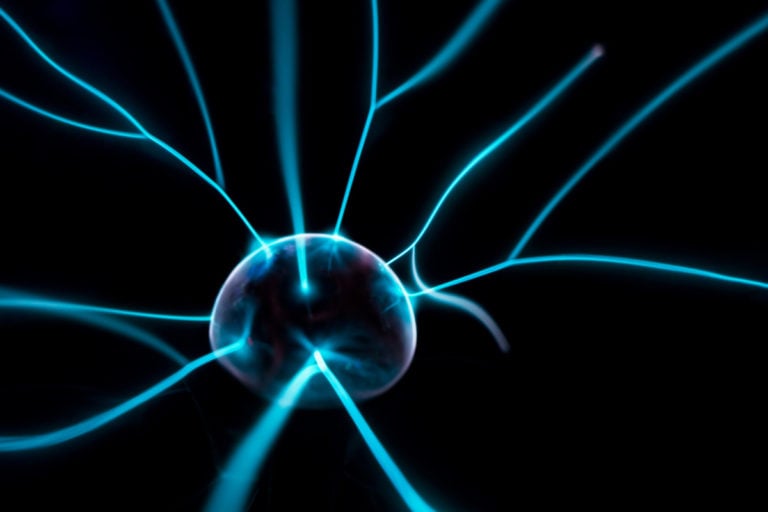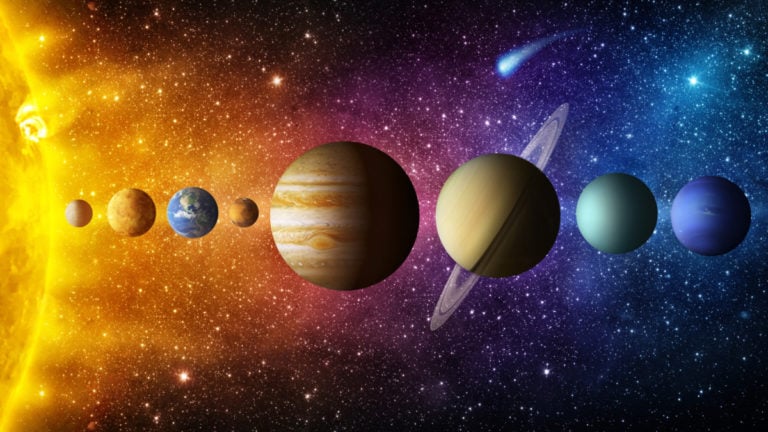Why is the sky blue is one of the frequently asked questions. The short answer to this question is: because of the earth’s atmosphere and sunlight. If the Earth had no atmosphere, the sky would be as black during the day as it is at night.
The sky is blue for today and black for nights. What distinguishes day from night is the sunlight that is absent at night, because we are then on the part of the Earth that faces away from the sun. This already gives us the first hint of what we are talking about – sunlight affects the color of the sky.
Sunlight and colors
The sun is white, as are the rays of the sun, which must travel from us to the sun as much as (approximately) 150 million kilometers. Saying the Sun is white can be a little misleading because white is not really a color, meaning it’s not just one color. It consists of many colors (more professionally it can be said like this: white is a polychromatic color, consisting of a continuous range of colors). Here’s what it really means.

White rays of light can be separated into a beautiful spectrum of colorful colors using a prism-like device. This is a long-term phenomenon in which whitish sunlight breaks down into a colorful spectrum of colors through raindrops.
We can also view light as a wave, and in order to understand why the sky is blue, we must do so. So, generally speaking, light is a wave (more formally: electromagnetic radiation) of a certain length (or frequency).
Waves of visible light (that’s what our eye can detect and turn our brain into an image) have wavelengths of roughly 400 to 700 nanometers, and in this context, color is just certain wavelengths. For example, red light has a wavelength of approximately 625 to 740 nanometers, green light has a wavelength of 500 to 565 nanometers, blue has a wavelength of 380 to 440 nanometers, and violet has a wavelength of 380 to 440 nanometers.
Regarding the question we are answering here, it is important to remember the following:
- Blue and violet light have the lowest wavelength of the other visible colors of light,
- The sun passes through empty space on its way to our eyes until it reaches Earth’s atmosphere. And as you pass through it, interesting things happen that end up turning the sky blue.
Atmosphere of the Earth
What is the Earth’s atmosphere in general? This is the Earth’s mantle, made up of various gases (and it exists because the Earth’s gravity is strong enough to “tether” them to itself). We all know that one of these gases is oxygen, which people need to live.
But many are surprised to learn that most of it goes to nitrogen. The proportion of oxygen in the atmosphere is approximately 21%, and nitrogen as much as 78%. The interaction of sunlight with nitrogen and oxygen molecules in the atmosphere makes our sky blue.
Scattering of the sun’s rays in the atmosphere
When the sun’s rays enter the atmosphere, passing unhindered through the airspace, they begin to “collide” with the molecules of nitrogen and oxygen. There is a phenomenon which we call scattering, or Rayleigh scattering (according to Lord Rayleigh, who described this phenomenon in 1871). Such scattering occurs when the particle size on which the light is scattered is smaller than the wavelength of that light (and this is true for nitrogen and oxygen molecules in the atmosphere, which are much smaller than the wavelength of visible sunlight).

What’s important about Rayleigh scattering is that it depends on the wavelength or color of the light: short-wavelength light scatters the most, and long-wavelength light scatters the least (if, by chance, to the fourth power of the wavelength). For example, typical blue light scatters about 5 times more efficiently than red light.
As the sun’s rays pass through the atmosphere, the violet rays scatter the most, followed by the blue rays. This can be thought of as the purple and blue colors “running away” from the white sunlight and rearranging, that is, dispersing throughout the sky and finally reaching the eyes, creating a colored image of the sky. However, if purple is more diffuse than blue, then why is the sky not purple, but bluish?
There are two reasons for this. First of all, we note that there are fewer violet colors in the solar spectrum than blue ones. Secondly, human eyes are more sensitive to blue than violet. This is why the sky ends up appearing blue to us. And if there were no atmosphere, it would be black, because there would be no molecules to scatter sunlight across the sky.
Why is the sky red at sunrise and sunset?
At sunrise and sunset, sunlight has to travel a longer distance through the atmosphere than when the sun is high in the sky to reach our eyes. In this case, violet and blue radiation is scattered several times in random directions and ultimately does not reach our eyes. And if there are a lot of dust particles and smog in that layer of the atmosphere, then scattering on them will contribute to even more reddening, creating beautiful sunsets.














